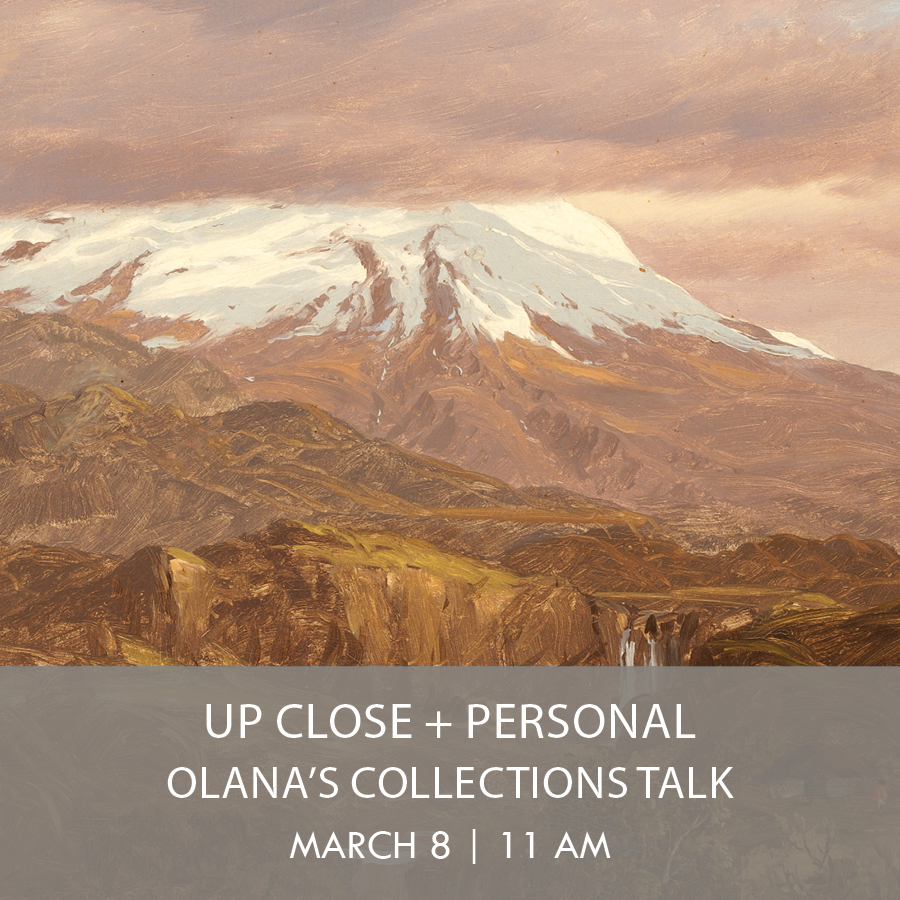Olana State Historic Site. Sunday, March 8, 2020. 11 am. Join Katherine Manthorne, Professor of Art History, Graduate Center, City University of New York, for a special focus on “Cayambe” by Frederic Church.
Join Katherine Manthorne, Professor of Art History, Graduate Center, City University of New York, for a special focus on “Cayambe” by Frederic Church.
The intercontinental travels of 19th-century artists such as Frederic Church and Martin Johnson Heade will be highlighted in our 2020 collaborative exhibition “Cross Pollination.” Church’s oil sketch of the Andean peak Cayambe demonstrates his close study of nature and the pre-Columbian cultures of South America and reveals how he forged a tradition of traveler-art that spans from the 19th century until today.
Space is very limited, reservations required.